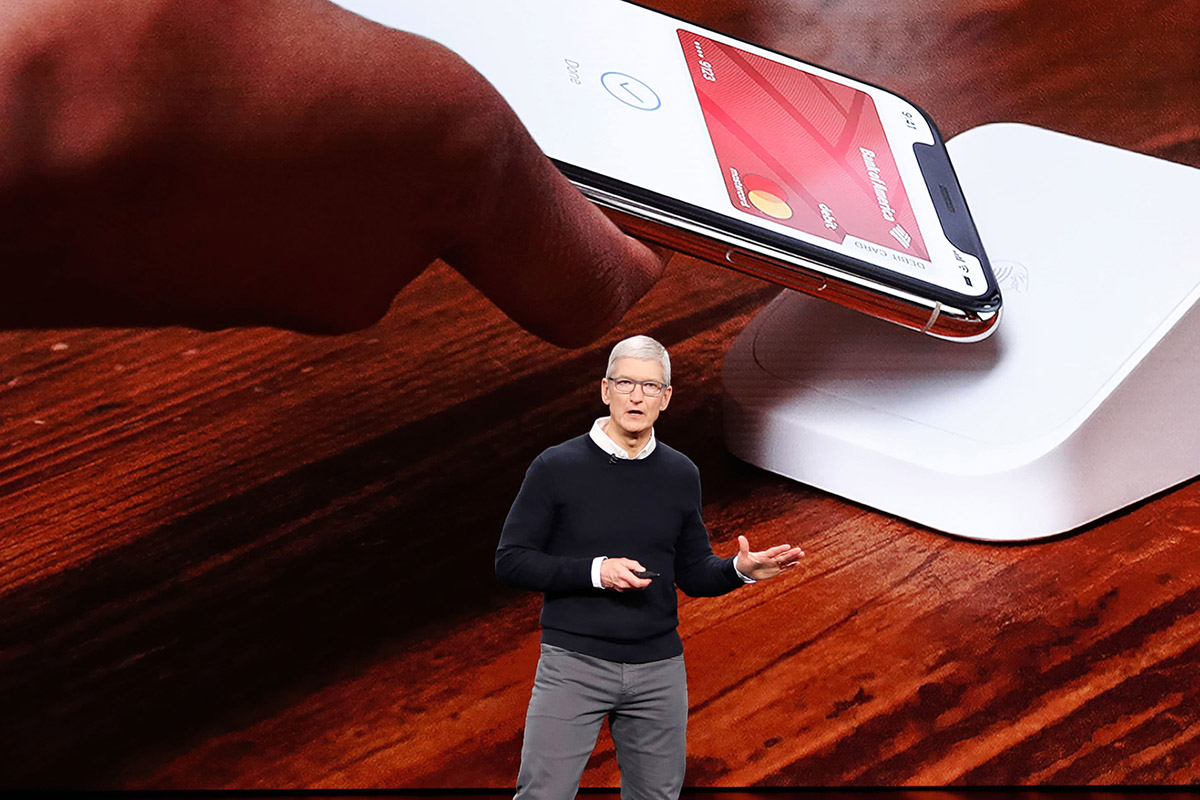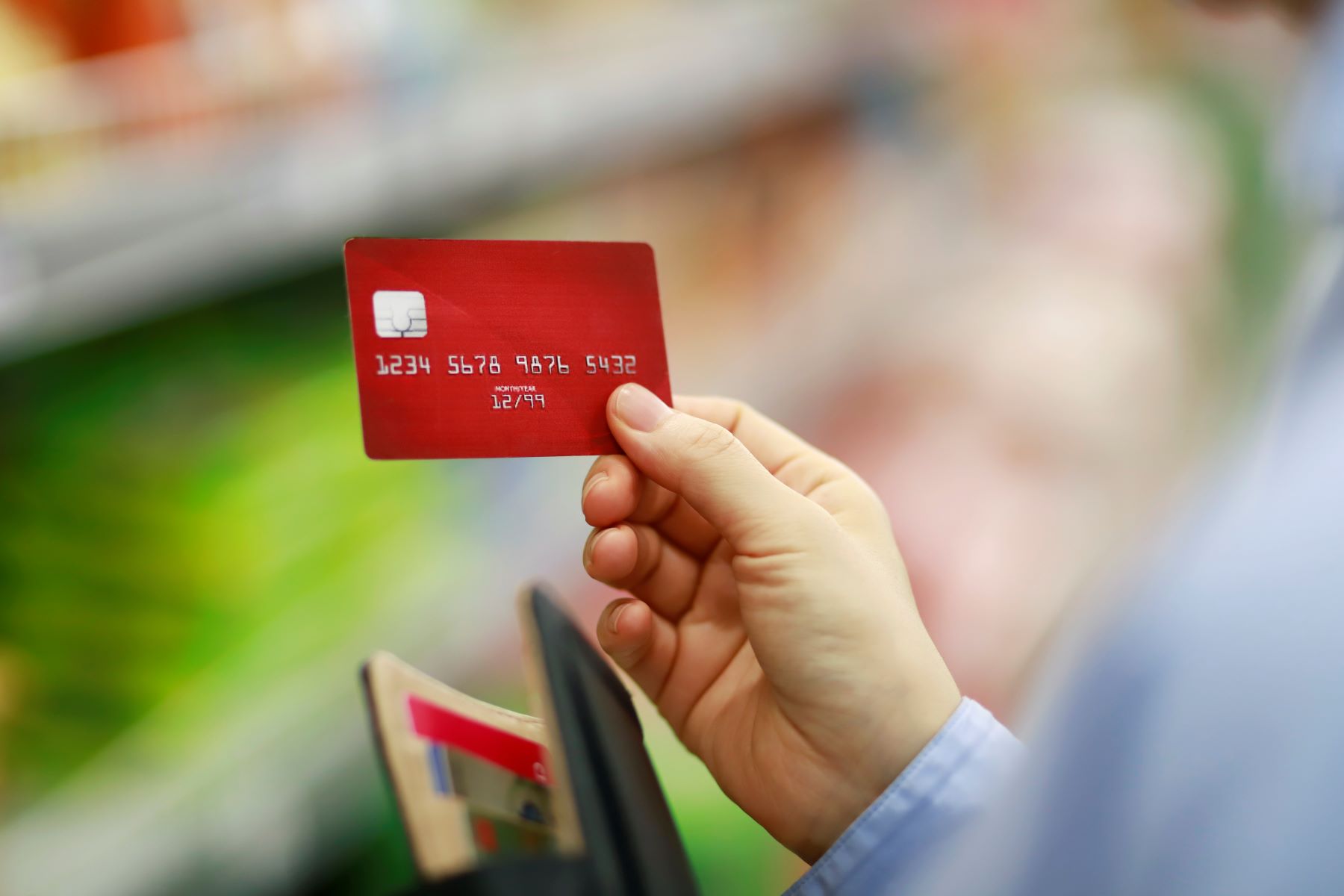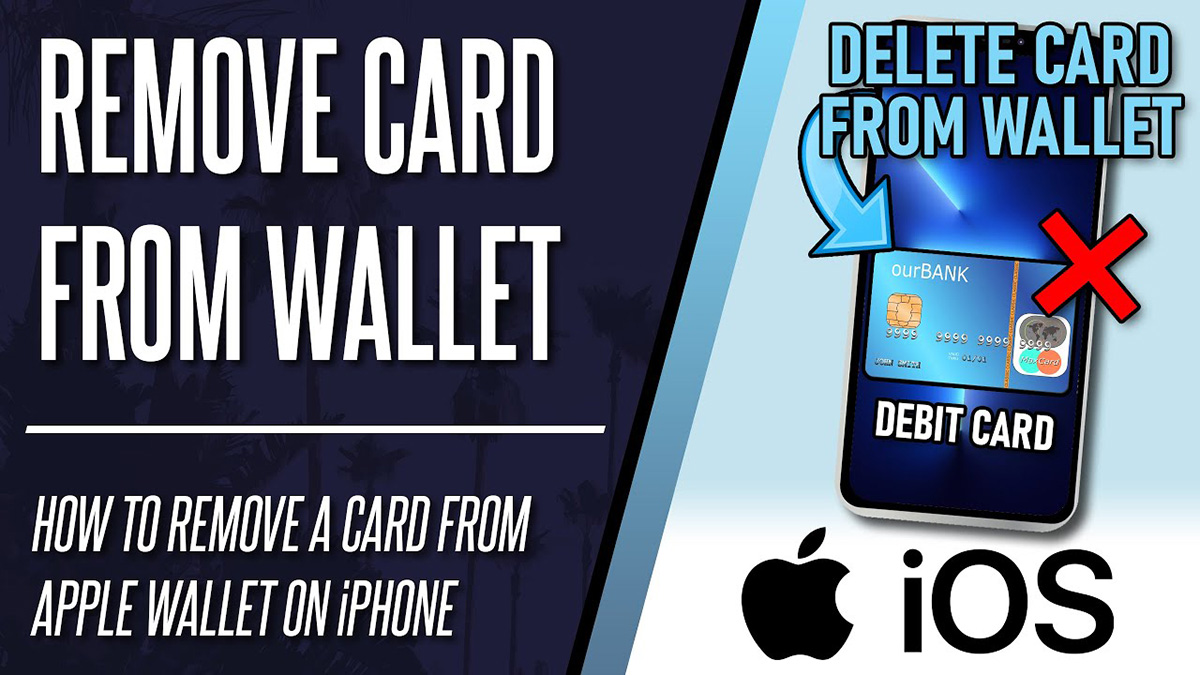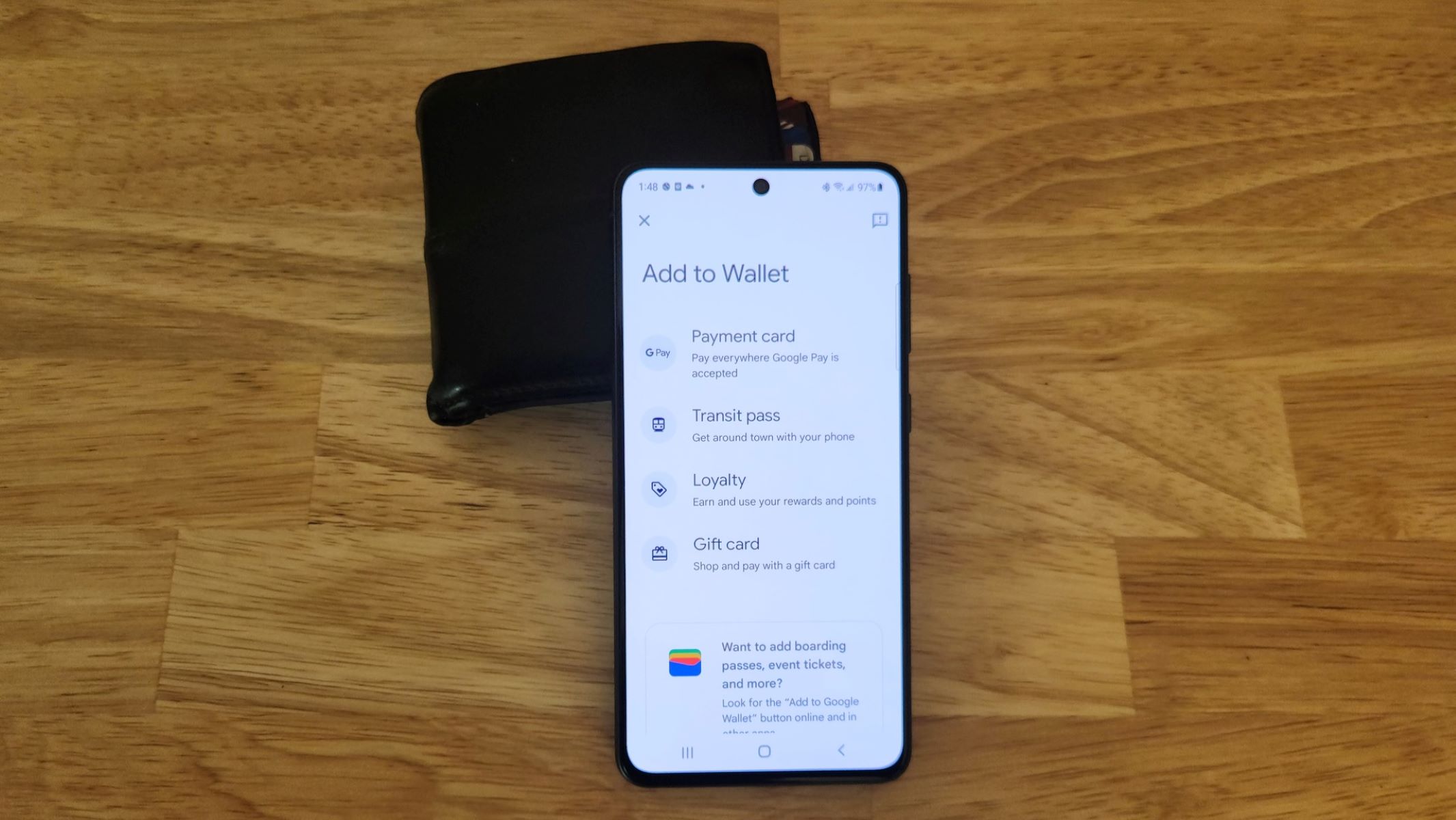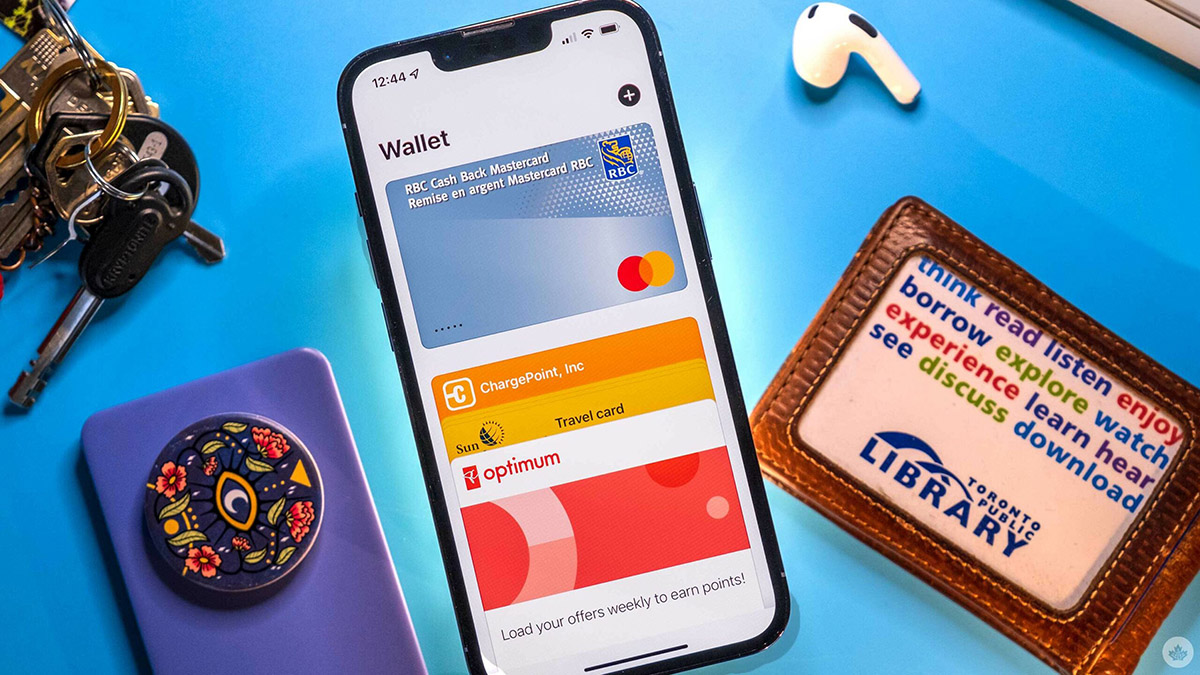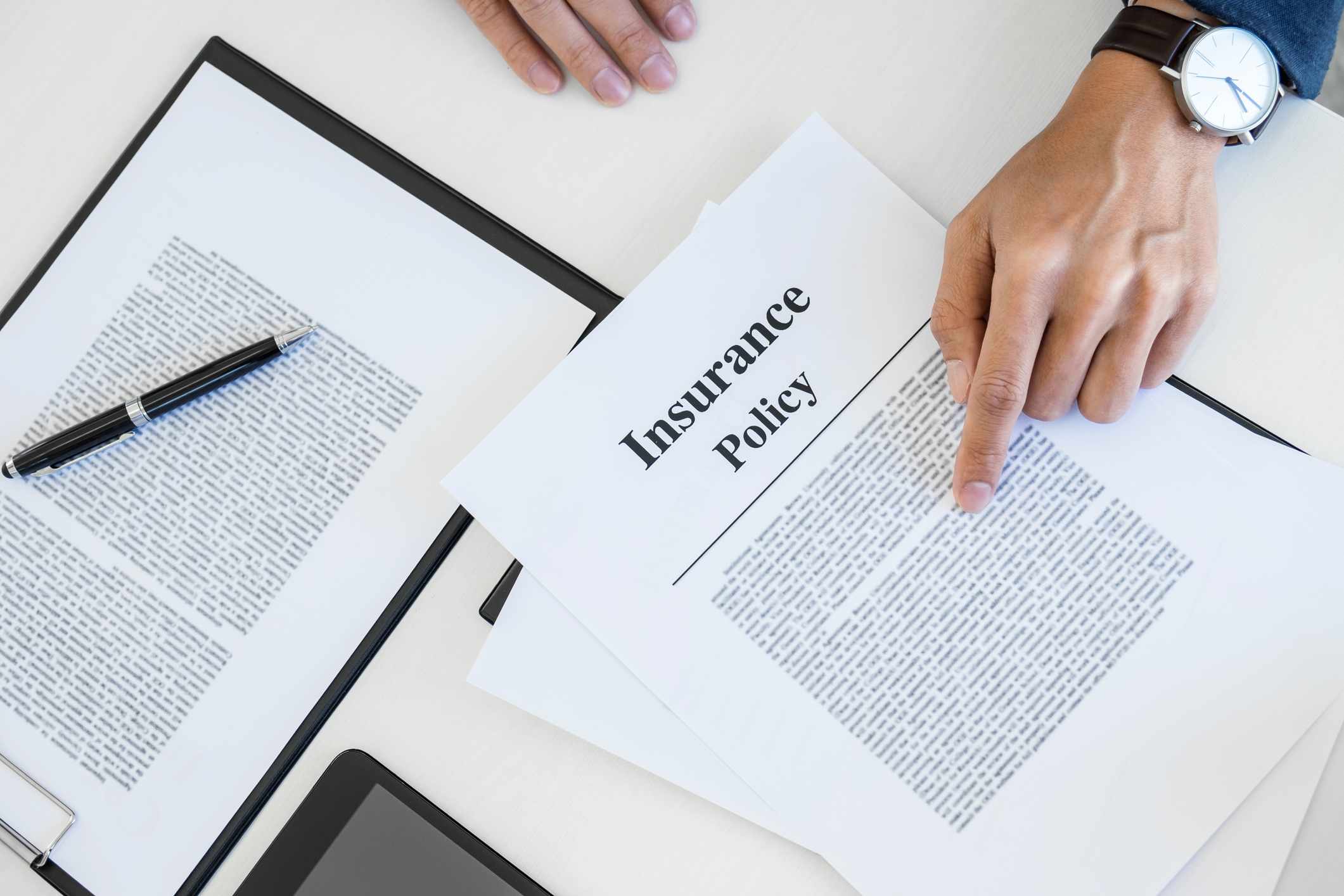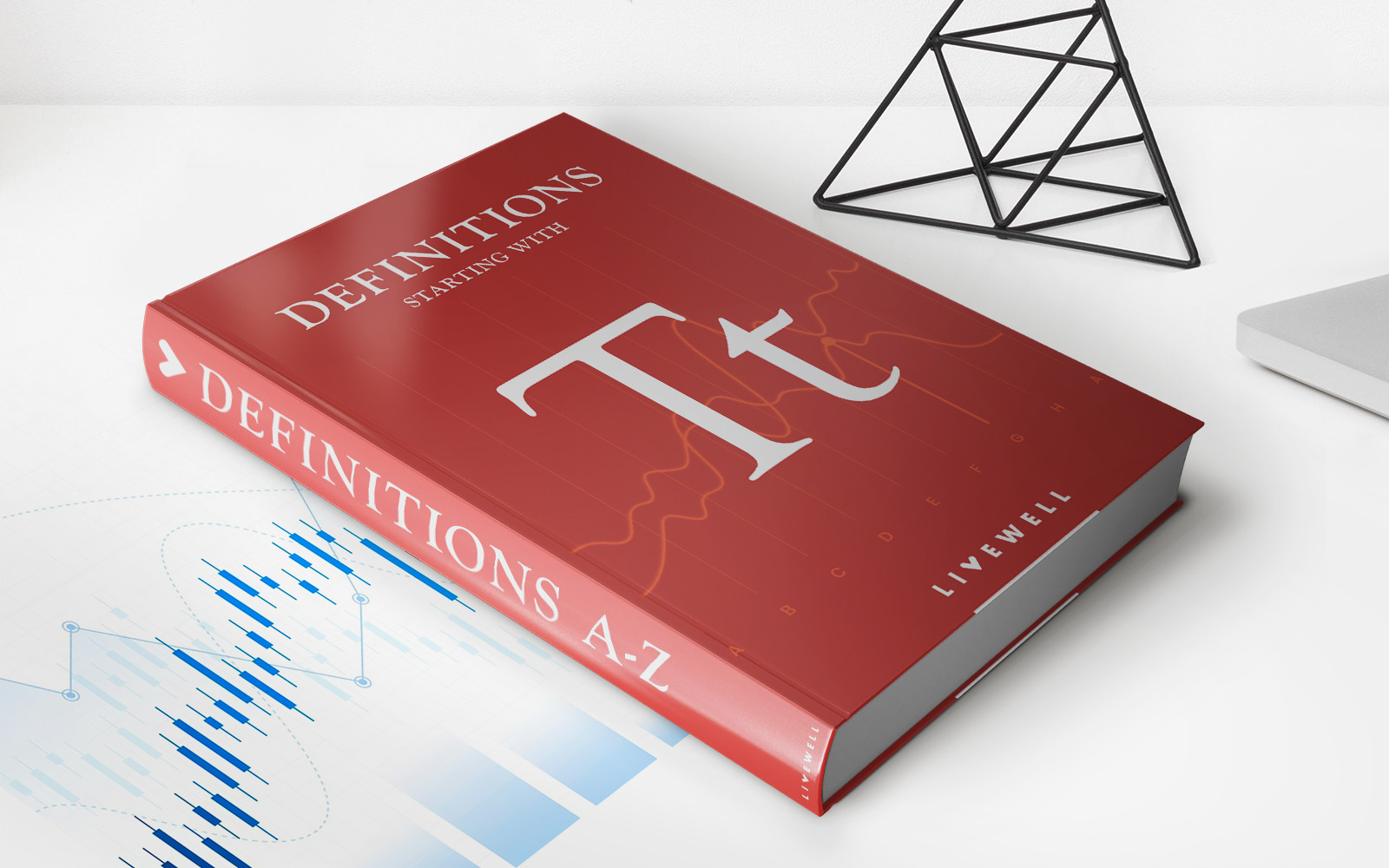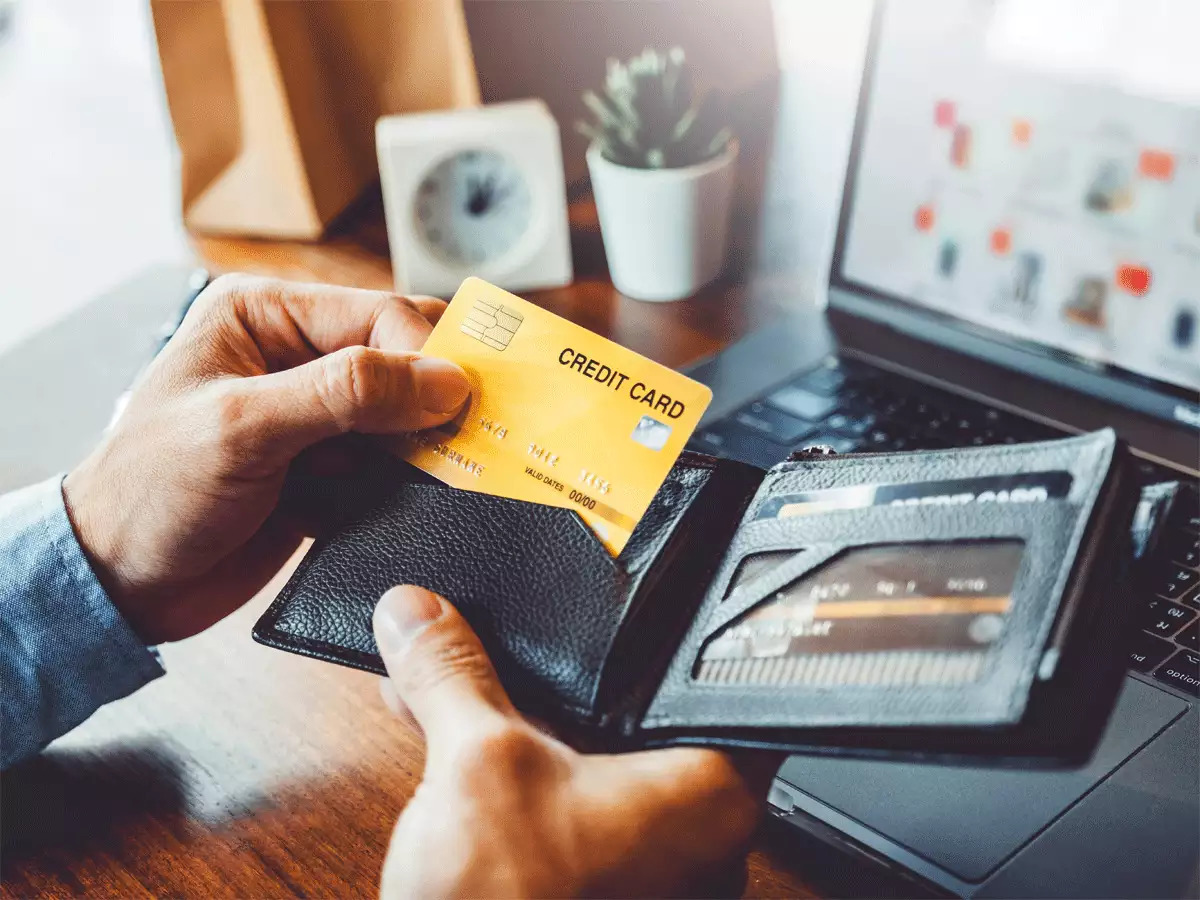

Finance
How To Protect Your Credit Card In Your Wallet
Modified: February 21, 2024
Learn effective ways to protect your credit card from fraudsters. Shield your finances by implementing smart strategies when storing your cards in your wallet.
(Many of the links in this article redirect to a specific reviewed product. Your purchase of these products through affiliate links helps to generate commission for LiveWell, at no extra cost. Learn more)
Table of Contents
- Introduction
- Understanding Credit Card Fraud
- Choosing the Right Wallet
- Keeping Your Wallet Secure
- Utilizing Credit Card Sleeves or RFID Blocking Wallets
- Avoiding Suspicious Websites and Scams
- Monitoring Your Credit Card Statements Regularly
- Reporting Lost or Stolen Cards Immediately
- Being Wary of Public Wi-Fi Networks
- Using Strong and Unique PINs or Passwords
- Taking Advantage of Credit Card Security Features
- Conclusion
Introduction
When it comes to safeguarding your credit card, taking proactive measures is crucial. With the rise of digital technology, credit card fraud has become a prevalent issue that can potentially wreak havoc on your finances and personal information. However, by implementing effective strategies, you can protect your credit card and add an extra layer of security.
In this article, we will explore various ways to keep your credit card safe and secure, particularly when it is in your wallet. We will delve into the importance of understanding credit card fraud, choosing the right wallet, and keeping your wallet secure at all times. Additionally, we will discuss the benefits of utilizing credit card sleeves or RFID blocking wallets, and the importance of being cautious while browsing suspicious websites or falling victim to scams.
Furthermore, we will emphasize the significance of monitoring your credit card statements regularly, reporting lost or stolen cards immediately, and being wary of public Wi-Fi networks. We will also touch upon the importance of using strong and unique PINs or passwords and taking full advantage of the security features provided by credit card issuers.
By following the tips and recommendations provided in this article, you can have peace of mind knowing that your credit card is protected in your wallet.
Understanding Credit Card Fraud
Credit card fraud is a form of identity theft where unauthorized individuals gain access to your credit card information and use it for fraudulent purposes. This can include making unauthorized purchases, withdrawing cash from your account, or even opening new accounts in your name. Understanding the different types of credit card fraud can help you better protect yourself.
One common type of credit card fraud is skimming, where thieves use special devices to steal your card information when you make a transaction. This can happen at ATMs, gas pumps, or even in restaurants. Another form of credit card fraud is phishing, where scammers send fraudulent emails or make phone calls posing as legitimate institutions to trick you into providing your credit card details.
It’s important to be vigilant and cautious with your credit card information. Always keep an eye out for suspicious transactions or unauthorized charges on your statements. If you suspect any fraudulent activity, contact your credit card issuer immediately to report it.
Protecting your credit card information starts with keeping your physical card safe. Avoid leaving your card unattended or visible in public places. Be cautious when handing over your credit card to cashiers and ensure that they handle it discreetly. Additionally, always keep an eye on your card during transactions and shield your PIN when entering it.
By understanding the various methods used by fraudsters and practicing basic card security measures, you can significantly reduce the risk of falling victim to credit card fraud. The next step is selecting the right wallet that provides additional protection against theft and unauthorized access to your credit card information.
Choosing the Right Wallet
Choosing the right wallet is an important step in protecting your credit card from theft and fraud. With the advancement of technology, wallets have evolved to include additional security features that can help safeguard your personal information. Here are some factors to consider when selecting a wallet:
- RFID Blocking: Look for wallets that have RFID-blocking technology. This feature prevents unauthorized scanning and skimming of your credit card information. RFID-blocking wallets use special materials or a protective lining to block the radio waves used by RFID readers, making it difficult for thieves to access your card data.
- Material and Construction: Opt for wallets made of durable materials, such as leather or nylon, that can withstand wear and tear. Check the stitching and overall construction of the wallet to ensure it is of high quality and built to last.
- Design and Size: Choose a wallet that suits your lifestyle and preferences. Consider the size and number of compartments available, as well as the ease of access to your credit cards. Look for wallets with secure closures, such as zippers or snap buttons, to prevent accidental spills.
- Minimalist or Full-sized: Decide whether you prefer a minimalist wallet that can hold a few cards and some cash, or a full-sized wallet with additional compartments for IDs, coins, and other essentials. Some minimalist wallets are designed with RFID-blocking technology integrated into the card slots themselves.
- Brand Reputation: Research reputable brands known for producing high-quality and secure wallets. Read reviews and feedback from other customers to ensure that the wallet you choose lives up to its claims of security and durability.
Remember, the goal is to find a wallet that not only meets your needs in terms of functionality and design but also provides an extra layer of protection for your credit card information. A well-chosen wallet can significantly reduce the risk of unauthorized access and keep your credit card safe while it is in your possession.
Keeping Your Wallet Secure
Keeping your wallet secure is essential for protecting your credit card and personal information from theft or loss. By following these simple yet effective tips, you can greatly reduce the risk of unauthorized access to your wallet:
- Keep It Close: Always keep your wallet in a secure location, such as a zipped pocket, inner jacket pocket, or a front pocket. Avoid placing it in back pockets or open bags where it can be easily targeted by pickpockets.
- Avoid Overstuffing: Avoid overstuffing your wallet with unnecessary items like receipts, loyalty cards, or expired IDs. This not only makes your wallet bulkier and more uncomfortable to carry but also increases the risk of losing important cards or documents.
- Regularly Clean and Organize: Regularly clean out your wallet and remove any unnecessary items, receipts, or expired cards. Keeping your wallet organized not only makes it easier to find your credit cards but also reduces the chances of misplacing or losing them.
- Be Mindful in Public Places: When in crowded or busy public places, stay alert and keep a close eye on your wallet. Be cautious of any suspicious behavior around you, as thieves often take advantage of crowded spaces to pickpocket or snatch wallets.
- Divide and Conquer: Consider dividing your cards and cash between your wallet and another secure location, such as a money clip or a hidden pocket. In case of theft or loss, you won’t lose everything at once and will have a backup for emergencies.
By implementing these simple yet effective measures, you can greatly enhance the security of your wallet and minimize the risk of credit card theft or loss. However, it’s equally important to take additional precautions by utilizing credit card sleeves or RFID blocking wallets, which we will discuss in the next section.
Utilizing Credit Card Sleeves or RFID Blocking Wallets
In today’s technologically advanced world, it is essential to protect your credit card information from electronic theft. One effective way to do this is by utilizing credit card sleeves or RFID blocking wallets.
Credit card sleeves are thin, protective envelopes that you can slide your credit card into. These sleeves are typically made from materials that block radio waves, preventing unauthorized scanning of your card’s information. Simply slide your credit card into a sleeve, and it will be shielded from potential RFID skimming devices.
RFID blocking wallets, on the other hand, are specially designed wallets that incorporate RFID shielding technology. These wallets have built-in protective layers or materials that block radio waves and prevent RFID skimming. By using an RFID blocking wallet, all of your credit cards stored within the wallet are shielded from potential threats, providing you with an added layer of security.
When choosing a credit card sleeve or RFID blocking wallet, consider the following factors:
- Compatibility: Ensure that the credit card sleeves or RFID blocking wallet you choose can accommodate the number and size of your credit cards.
- Material Quality: Look for sleeves or wallets made from high-quality materials that provide effective RFID blocking. Materials such as aluminum or copper-lined fabric are commonly used for this purpose.
- Size and Convenience: Opt for sleeves or wallets that are easy to use and fit comfortably in your existing wallet or pocket.
- Brand Reputation: Consider purchasing credit card sleeves or RFID blocking wallets from reputable brands with positive reviews and a proven track record for security and durability.
By using credit card sleeves or RFID blocking wallets, you can protect your credit card information from unauthorized scanning and electronic theft. This additional layer of security will give you peace of mind knowing that your personal and financial information remains safe.
Avoiding Suspicious Websites and Scams
In the digital age, it’s important to be vigilant and cautious when browsing the internet to protect yourself from credit card fraud. One of the common ways in which fraudsters target individuals is through suspicious websites and scams. Here are some precautions you can take to avoid falling victim to these fraudulent activities:
- Verify Website Security: Before making any online purchases or entering your credit card information, ensure that the website is secure. Look for https:// in the website address and a padlock symbol indicating a secure connection. Avoid entering sensitive information on unsecured websites.
- Be Skeptical of Phishing Emails: Phishing emails are designed to trick individuals into providing their personal and financial information. Be cautious of emails claiming to be from financial institutions or credit card companies, especially if they ask for sensitive details or contain suspicious attachments or links. Always verify the legitimacy of the email by contacting the institution directly.
- Protect Personal Information: Avoid sharing your credit card information or personal details, such as your Social Security number or date of birth, on unfamiliar or suspicious websites. Legitimate websites will typically have secure payment methods and secure forms for data entry.
- Research and Read Reviews: Before making a purchase from an online retailer, do some research and read reviews from other customers. Look for any red flags, such as negative experiences or reports of credit card fraud, to ensure the credibility and trustworthiness of the website.
- Watch Out for Fake Websites: Fraudsters may create fake websites that closely resemble popular shopping sites to trick unsuspecting individuals. Check the URL carefully for any variations or misspellings. Avoid websites that have poor design, grammatical errors, or an unprofessional appearance.
By staying vigilant and exercising caution when browsing the internet, you can minimize the risk of falling victim to suspicious websites and scams. Remember, it’s better to be safe than sorry. If something seems suspicious or too good to be true, it’s best to err on the side of caution and avoid providing your credit card information.
Monitoring Your Credit Card Statements Regularly
One of the most important steps in protecting your credit card is regularly monitoring your credit card statements. By keeping a close eye on your statements, you can quickly identify any unauthorized or suspicious transactions and take immediate action. Here are some tips for effectively monitoring your credit card statements:
- Check Statements Regularly: Take the time to review your credit card statements as soon as they become available. This will help you detect any unauthorized transactions or errors promptly.
- Verify Transactions: Go through each transaction listed on your statement and verify that they are legitimate. Look for any unfamiliar or suspicious charges, even small ones, as they could be an indication of fraudulent activity. If you notice any discrepancies, contact your credit card issuer immediately.
- Compare Receipts: Keep your receipts and compare them with the corresponding transactions on your credit card statement. This will help ensure that all charges are accurate and legitimate.
- Sign Up for Alerts: Many credit card issuers offer alerts that notify you of any suspicious or unusual activity on your account. Take advantage of these alerts and set them up to receive real-time notifications via text message or email.
- Utilize Online and Mobile Banking: Access your credit card statements through online or mobile banking platforms. This allows you to view your statements conveniently and frequently, enabling you to detect any fraudulent activity as soon as possible.
- Report Suspicious Activity: If you notice any unauthorized charges or suspicious activity on your credit card statement, report it to your credit card issuer immediately. They will guide you through the necessary steps to resolve the issue and protect your account.
Regularly monitoring your credit card statements is an essential part of credit card security. By being proactive and vigilant, you can detect and address fraudulent activity promptly, minimizing the potential damage and ensuring the ongoing security of your credit card.
Reporting Lost or Stolen Cards Immediately
If you lose your credit card or suspect that it has been stolen, it is crucial to report it to your credit card issuer immediately. Taking prompt action can help prevent unauthorized use of your card and mitigate any potential fraudulent activity. Here’s what you should do:
- Contact Your Credit Card Issuer: Locate the contact information for your credit card issuer, whether it’s a phone number or an online portal. Report the lost or stolen card as soon as possible, providing them with the necessary information such as your name, card number, and any suspicious activity you may have noticed.
- Freeze or Cancel Your Card: Ask your credit card issuer to freeze or cancel your card to prevent any further unauthorized transactions. They will guide you through the necessary steps to take, such as verifying your identity and issuing a new card.
- Monitor Your Account: Keep a close eye on your credit card account for any unauthorized activity, even after reporting the loss or theft. Notify your credit card issuer immediately if you notice any suspicious charges or transactions.
- Update Automatic Payments: If you had any automatic payments set up with your lost or stolen card, remember to update the payment information with your new card details to ensure uninterrupted service.
- Keep a Record: Make a note of the date, time, and the representative you spoke to when reporting your lost or stolen card. This will serve as a reference in case of any issues or disputes that may arise in the future.
- Be Cautious with Personal Information: When reporting your lost or stolen card, ensure that you provide the necessary information only to your credit card issuer or through secure channels. Avoid sharing sensitive details with anyone else, as it could potentially lead to identity theft or further compromise your account.
Remember, reporting a lost or stolen card immediately is crucial in minimizing the risk of fraudulent activity and protecting your finances. By taking swift action, you can prevent unauthorized charges and ensure the swift resolution of the situation by your credit card issuer.
Being Wary of Public Wi-Fi Networks
Public Wi-Fi networks are convenient for staying connected while on the go, but they can also pose a significant security risk, including potential credit card fraud. It is important to exercise caution when using public Wi-Fi networks to protect your credit card information. Here are some steps you can take to stay secure:
- Avoid Financial Transactions: Avoid making any financial transactions, such as checking your credit card balance or making online purchases, while connected to public Wi-Fi networks. These networks are often unsecured, making it easier for hackers to intercept sensitive information.
- Use a VPN: Consider using a virtual private network (VPN) when connecting to public Wi-Fi. A VPN encrypts your internet connection, ensuring that your data remains secure and protected from prying eyes.
- Disable Automatic Wi-Fi Connections: Disable the automatic connection feature on your device to prevent it from automatically connecting to unsecured or unknown Wi-Fi networks. This will help you avoid inadvertently connecting to a malicious network.
- Verify Network Authenticity: Before connecting to a public Wi-Fi network, verify the network name with the legitimate source, such as a coffee shop or airport staff. Hackers often create fake Wi-Fi networks with similar names to trick unsuspecting users.
- Stick to HTTPS Websites: When browsing the internet, make sure to visit websites that use secure connections (https://). These websites encrypt the data transmitted between your device and the server, reducing the risk of interception and unauthorized access to your credit card information.
- Keep Software Updated: Regularly update the software on your devices, including your operating system and web browser. Updates often include important security patches that help protect against potential vulnerabilities.
- Enable Two-Factor Authentication: Enable two-factor authentication (2FA) for your online banking and credit card accounts. 2FA provides an additional layer of security by requiring a second form of verification, such as a unique code sent to your phone, when logging in or making transactions.
- Use Mobile Data or Personal Hotspots: Whenever possible, prefer using your mobile data network or personal hotspots instead of public Wi-Fi networks. This ensures a more secure connection and reduces the risk of potential credit card fraud.
Be cautious when using public Wi-Fi networks and prioritize the security of your credit card information. By following these steps, you can significantly reduce the risk of falling victim to hackers or fraudulent activities while connected to public Wi-Fi networks.
Using Strong and Unique PINs or Passwords
Creating strong and unique PINs or passwords is essential for protecting your credit card and preventing unauthorized access to your accounts. Weak or easily guessable PINs or passwords can leave your credit card information vulnerable to hackers. Follow these guidelines to ensure your PINs and passwords are strong and secure:
- Use a Combination of Characters: Create a PIN or password that includes a combination of uppercase and lowercase letters, numbers, and special characters. This makes it more difficult for hackers to guess or crack your code.
- Avoid Common Passwords or Sequential Numbers: Stay away from common passwords such as “password” or sequential numbers like “123456”. These are easy targets for hackers. Instead, choose a unique combination that is not easily guessable.
- Use a Longer Password: The longer the password, the more secure it is. Aim for a minimum of 8 characters for passwords and 4 digits for PINs. The longer the password, the more combinations there are, making it harder for hackers to crack.
- Avoid Personal Information: Avoid using easily accessible personal information such as your birthdate, address, or phone number as your PIN or password. This information can be easily guessable or obtained through social engineering.
- Use a Password Manager: Consider using a password manager to securely store and generate unique passwords for each of your accounts. Password managers help you create strong passwords and remember them, reducing the risk of using the same password across multiple accounts.
- Change Your Passwords Regularly: It’s good practice to change your passwords and PINs on a regular basis. Set reminders to update your passwords every few months, or whenever you suspect a security breach or potential compromise.
- Avoid Sharing or Writing Down Passwords: Keep your PINs and passwords confidential and avoid sharing them with anyone. Also, refrain from writing them down where they can be easily found by others. Instead, use a reliable password manager to securely store them.
- Enable Two-Factor Authentication: In addition to strong passwords, enable two-factor authentication (2FA) whenever possible. 2FA adds an extra layer of security by requiring a second form of verification, such as a unique code sent to your smartphone, to access your accounts.
By using strong and unique PINs or passwords, you can significantly enhance the security of your credit card and protect your personal information from unauthorized access. Remember to follow these guidelines and update your passwords regularly to stay one step ahead of potential hackers.
Taking Advantage of Credit Card Security Features
Credit card issuers provide various security features that can help protect your credit card and personal information. It’s crucial to familiarize yourself with these features and take full advantage of them. Here are some common security features offered by credit card companies:
- EMV Chip Technology: Many credit cards now come equipped with EMV chip technology, which provides enhanced security compared to traditional magnetic stripe cards. These chips generate a unique transaction code for each purchase, making it difficult for hackers to replicate your card information.
- Contactless Payments: Contactless payment methods, such as Near Field Communication (NFC) or mobile wallets like Apple Pay or Google Pay, provide an added layer of security. These methods use tokenization, which replaces your actual credit card information with a unique token, minimizing the risk of your card details being exposed during transactions.
- Card Verification Code (CVC/CVV): On the back of your credit card, you will find a three-digit Card Verification Code (CVC) or Card Verification Value (CVV). This code is required for online and phone transactions and acts as an additional verification step for added security.
- Transaction Notifications: Many credit card issuers offer real-time transaction notifications. These notifications can be received via email, text message, or through a mobile app, allowing you to stay informed about any activity on your credit card account and quickly identify any unauthorized transactions.
- Temporary Card Lock: Some credit card issuers provide the option to temporarily lock your credit card if you misplace it or suspect fraudulent activity. This feature allows you to prevent any new transactions from taking place until you locate your card or take further action.
- Virtual Credit Card Numbers: Virtual credit card numbers are temporary, randomly generated credit card numbers that can be used for online transactions. These numbers are linked to your actual credit card account but provide an additional layer of security by keeping your real card information hidden during online purchases.
- Fraud Protection: Credit card issuers often have systems in place to monitor and detect suspicious activity on your account. They may contact you if they notice any unusual transactions and take proactive measures to prevent further fraud.
Take the time to familiarize yourself with the security features offered by your credit card issuer and make sure to utilize them effectively. This will help protect your credit card from fraudulent activity and provide you with peace of mind as you use your card for various transactions.
Conclusion
Safeguarding your credit card in your wallet is of utmost importance in today’s digital world. By taking proactive measures and implementing effective strategies, you can protect your credit card from theft, fraud, and unauthorized access. Understanding credit card fraud, choosing the right wallet, and keeping your wallet secure are fundamental steps in ensuring the safety of your credit card.
Utilizing credit card sleeves or RFID blocking wallets adds an extra layer of protection by preventing unauthorized scanning of your card information. Avoiding suspicious websites and scams, as well as monitoring your credit card statements regularly, allows you to detect and address any fraudulent activity promptly. Reporting lost or stolen cards immediately is essential in preventing unauthorized transactions and minimizing the impact of credit card fraud.
Being wary of public Wi-Fi networks and using strong and unique PINs or passwords safeguards your credit card information from hackers and potential breaches. It’s also crucial to take advantage of the security features offered by your credit card issuer, such as EMV chip technology, contactless payments, and transaction notifications.
By following these practices, you can significantly reduce the risk of credit card fraud and protect your financial well-being. Remember to stay vigilant, keep your credit card information confidential, and remain proactive in maintaining the security of your credit card. By doing so, you can confidently use your credit card while keeping your personal and financial information safe.

